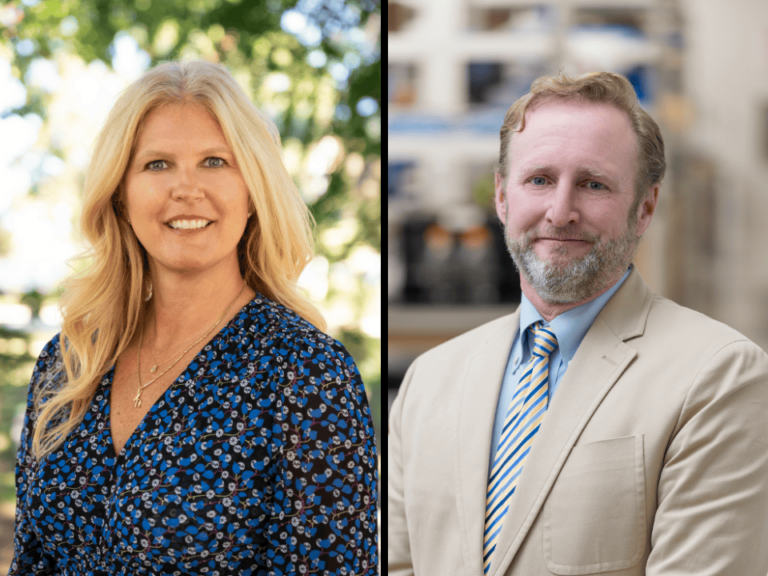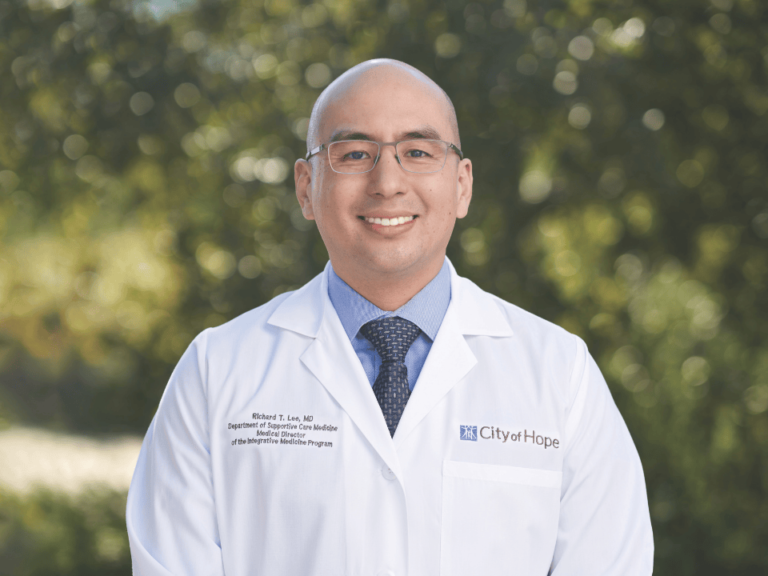The thymus gland, in many ways, remains a mystery. The thymic regeneration division of the laboratory of Marcel van den Brink, president of City of Hope Los Angeles and City of Hope National Medical Center, is trying to tease out its secrets.
Devoting an entire division to the thymus makes perfect sense given the major role it plays in the body’s immune system. T cells develop in the thymus—which is also where those cells learn to recognize a near-innumerable number of threats to be neutralized.
T cell production is robust in early childhood, but by puberty, the thymus begins to diminish, in a process called involution. Gradually, it produces fewer and less diverse T cells, leaving the body increasingly vulnerable to infections.
Cancer treatments, especially chemotherapy given before stem cell transplants, can injure the thymus and accelerate involution, a daunting outcome for young patients who see their disease arrested, only to face a lifetime without a healthy immune system.
The thymus group at City of Hope, led by Andri Lemarquis, looks for ways to “wake up” the slumbering thymus and restore its T cell production. Their work focuses on boosting the thymus in patients who might lose this basic protection.
One of the lab’s ideas may be a game-changer: an important discovery about regulatory T cells, or Tregs.
When normal T cells target an invader, Tregs make sure the attack doesn’t go too far, stopping the assault before healthy tissues are attacked as well. The thymus group uncovered a novel and previously undescribed population of Tregs that accumulate in the thymus after injury and secrete a growth factor called amphiregulin. In preclinical research, scientists showed that when these Tregs are added to the bloodstream intravenously, they return to the thymus, where amphiregulin then helps teach the thymus to regenerate and develop more T cells.
The team saw the same results in mice and human tissue samples. The researchers were also surprised to find that the results extended to older mice, as it was believed that lost thymic function from aging may not be treatable.
The discovery represents a novel pathway to regeneration in the gland. It opens up a new translational angle for addressing thymic fatigue and damage. There is great potential for Tregs and amphiregulin to be used therapeutically in patients receiving cancer therapies to ameliorate immune function. This could be the path toward one day maintaining a working thymus, and its T cell production, for a lifetime.
The findings, a collaboration with an international team of scientists, were recently published in the journal Immunity.
The work outlined in the Immunity paper builds on a research program established in the late 1990s by van den Brink to boost immune reconstitution in patients receiving cancer therapies, especially in the bone marrow transplantation field.
City of Hope®, one of the largest and most advanced cancer research and treatment organizations in the U.S. with its National Medical Center named top five in the nation for cancer by U.S. News & World Report. To learn more about City of Hope, visit: www.cityofhope.org.










